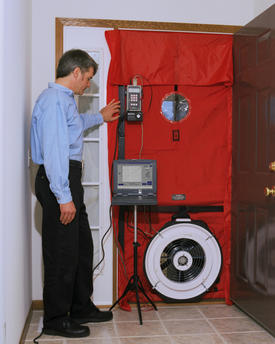
Image Credit: Green Building Advisor
UPDATED: 12/9/10 with expert opinions from David White and Marc Rosenbaum
Frank O’s new house is tight — very tight. Tests by an energy auditor measured 0.13 air changes per hour at 50 pascals of depressurization (ACH50), meaning the house beats the very stringent airtightness target of the Passivhaus standard.
Frank O has installed a heat-recovery ventilator (HRV) to provide fresh air as well as fans for spot ventilation and a range hood fan rated at 189 cubic feet per minute (cfm).
Sounds perfect. So what’s the problem?
“The auditor and I also played with the spot ventilation fans and his manometer, and we were able to reach -46 pascals with all house fans on and the electric clothes dryer on,” Frank O writes in his Q&A post. “My concern is: with such a tight house, where does the air come from during spot ventilation and clothes drying?”
Are the numbers right?
J Chesnut’s first question is whether the auditor has calculated air leakage correctly.
“Are you sure you calculated your ACH number correctly?” he asks. “It is not unusual for someone to determine the volume of the building incorrectly and therefore miscalculate the ACH from the cfm reading.
“The tightest among Passivhaus builders in the U.S. I am familiar with is .15 ACH and I heard this was possible to attain because it was a mid-sized commercial building (apparently the smaller the building the more difficult it is to get a low ACH).”
In a subsequent post, Frank O confirmed Chesnut’s suspicions. It turns out that his house tested at 2.14 ach50, not 0.13 ach50. So Frank O’s house isn’t quite as tight as his first post claimed.
Frank O provided additional details about how the house was constructed: blown-in cellulose in the scissor-truss attic, damp cellulose…
Weekly Newsletter
Get building science and energy efficiency advice, plus special offers, in your inbox.

This article is only available to GBA Prime Members
Sign up for a free trial and get instant access to this article as well as GBA’s complete library of premium articles and construction details.
Start Free TrialAlready a member? Log in





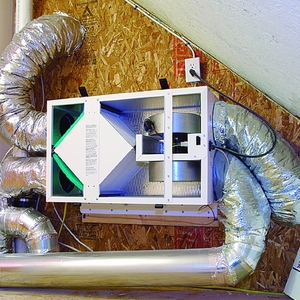
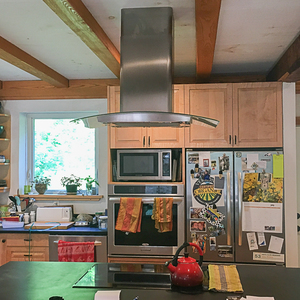
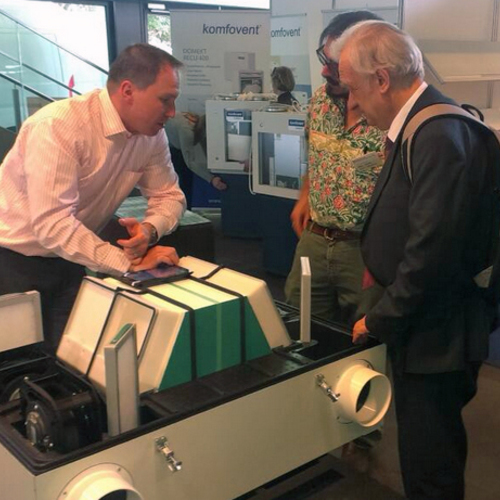
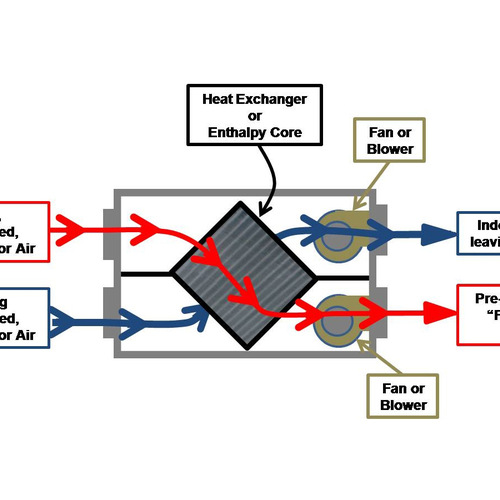






9 Comments
Makeup Air
Hi Scott: the ACH data for Frank's house was ambiguously worded, as Frank later noted:
11. UPDATE: 2.14 ACH50, .13 ACH natural. Thanks all for your feedback...too large of a range hood has been addressed.
Answered by Frank O - Nov 13
--At ACHnat of 0.13, a 2700 SF house with 8 ft ceilings has 21.6K CF which ventilates naturally at 2808 CF per hour or 47 CFM (albeit more on windy days and less on calm days), enough to handle those spot ventilation fans. As you correctly point out, tighter houses and larger exhaust fans can pose imbalances requiring makeup air. I recall Dr. Wolfgang Feist once proposed a solution whereby a clothes dryer exhaust could be run through an HRV, recapturing 80%+ of the heat. Dr. Feist, perhaps could you help us out re the specifics of this idea; how does it balance the air flows?
Response to Jan Juran
Jan Juran,
Thanks for your comment. I have edited Scott Gibson's article to reflect Frank O's correction.
Recovering copy editor notes that
Frank O becomes Robert O in the fourth section of the article.
Response to David Meiland
David,
Thanks.
HRV inlet becomes the make up air supply?
I thought I asked a similar question a little while ago and someone commented that the HRV will just leak (ie not be balanced) and supply the make up air?
John
Response to John
John,
Strong depressurization can unbalance an HRV system and cause the HRV inlet to leak. But an HRV system is not designed to provide makeup air, and should never be depended upon to supply makeup air.
HRV manufacturers are explicit about this fact in their instructions. They advise installers that if you need a makeup air system (for example, to provide combustion air to an atmospherically vented appliance), then you need to install a separate makeup air system, since HRVs are NOT designed to provide makeup air.
Dryer Exhaust and HRV
Dr. Fiest alluded to this idea generally in a post in May but more detail re air flows balancing implementation would be interesting:
12. Martin: Yes, I often asked myself whether one can top the German extensive use of the wash-dry-wear-cyclus. You just told me: Yes, one can. But, doesn't matter, with a cabinet a bit larger than the one shown, you can do what you need (:-). And another idea: The propan/butan heaters in your dryers - these will produce some 1 to 3 kW of heat output. That is just as much you need for the whole heating of a passive house. So, you could save the money for the whole heating system and use the dryer exhaust air (run it through the HRV) to heat a Passive House. You might laugh: Such ideas have already been tested by one of the "extremist" passive house engineers in Europe.
Answered by Wolfgang Feist - May 4 10
Tight homes and ventilation.
There is no blanket answer to the issue other than to consider the "Whole House" point of view. Start with 'do no harm" and consider combustion saftey as your priority. Once we know there are no CO backdrafting issues then the make-up air problem can be addressed. If the place is really tight (<= to 2ach) then the air out = air in concept is relevant to exhaust vent performance. There are several balenced sytems on the market from Honeywell and Panasonic. Climate Zone becomes an issue as the moisture control question come up. I live in a mixed-humid zone and there have been some tight houses here that have not performed well due to humidity control, or lack there of. The point is, we need to look at each home as a seperate case and not expect there to be a one size fits all solution. Stick to the KISS principle and use common sense and your blower door.
passive make up ducts!
Are we really going to go to the trouble of designing, installing and charging for "passive make up ducts?" At what point doesn't a well designed home (attention to window and door placement) and traditional crafted windows (long lasting windows made from sustainable materials like wood and glass) make just as much sense? Our ancestors where neither dumb or ignorant. Their designs and techniques came from millennium of experience. Start from that asumptioin if you wish to build a better home.
Log in or become a member to post a comment.
Sign up Log in